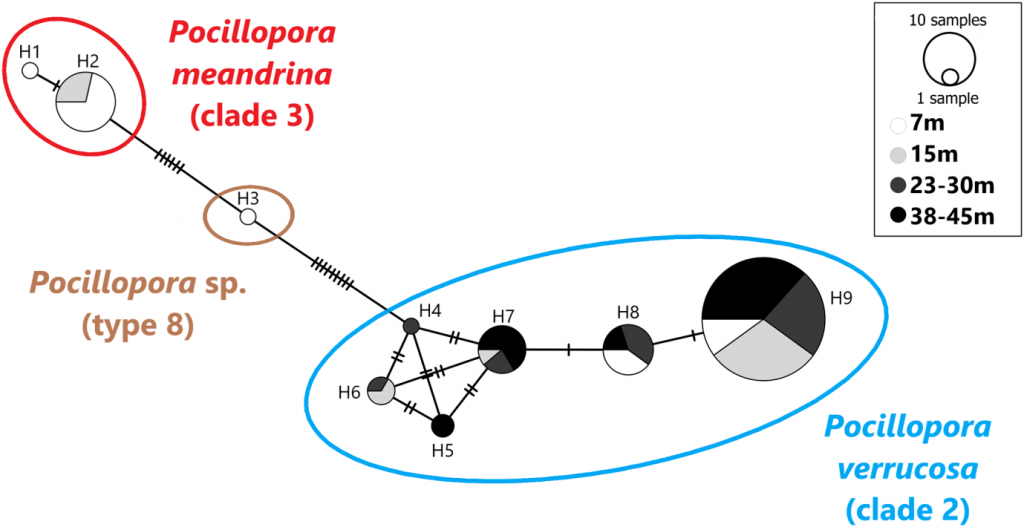Molecular assessment of Pocillopora verrucosa (Scleractinia; Pocilloporidae) distribution along a depth gradient in Ludao, Taiwan
Scleractinian corals identification is mainly based on their skeletal characteristics. However, skeletal features can vary according to the environmental setting, making coral identification particularly challenging for biologists. This task is made more arduous when studying corals along a depth gradient where light and water movement are greatly influencing coral morphology. In Taiwan, Pocillopora verrucosa (Ellis and Solander, 1786) was previously reported exclusively from shallow waters (<10m in depth), but recent observation of this species in the mesophotic zone (>40m in depth) questions its bathymetric distribution. Prof. V. Denis and his collaborators from Academia Sinica used a molecular approach to investigate the vertical and horizontal spatial distribution of P. verrucosa around Ludao (Green Island), Taiwan. They genotyped the mitochondrial open reading frame (mtORF-ATP6) and the histone 3 (Hist3) of Pocillopora verrucosa-like colonies collected from 4 depth zones, ranging from 7 to 45m, at 3 sites around the island. Of the 101 colonies sampled, 85 were genotyped as P. verrucosa, 15 as P. meandrina, and one specimen as an undescribed Pocillopora species. P. verrucosa was found at all depths increasing its known depth range for Taiwan. This study illustrates the difficulty of identifying Pocillopora corals in the field and emphasizes the relevance of molecular taxonomy as an important and complementary tool to traditional taxonomy for clarifying vertical and horizontal species distribution. With its large bathymetric distribution, P. verrucosa could benefit from the refuge that the mesophotic zone could eventually offer. Prof. V. Denis’ results also illustrate the need in conservation biology to target species genetic diversity rather than just species diversity. The paper, titled “Molecular assessment of Pocillopora verrucosa (Scleractinia; Pocilloporidae) distribution along a depth gradient in Ludao, Taiwan”, was published in PeerJ in October 2018 and is part of collaborative efforts between National Taiwan University and Academia Sinica to better understand the role that Taiwanese mesophotic coral ecosystems could play for future coral reefs facing the current trend of natural and human disturbances.
Reference: De Palmas S, Soto D, Denis V*, Ho M, Chen CA* (2018) Molecular assessment of Pocillopora verrucosa (Scleractinia; Pocilloporidae) distribution along a depth gradient in Ludao, Taiwan. PeerJ 6:e5797 https://doi.org/10.7717/peerj.5797
Figure legend: Haplotype network based on the mtORF sequences data (total alignment length 656 bp). Vertical bars represent the number of base pair differences between haplotype. Pocillopora clade 2 is blue, Pocillopora type 8 is brown, Pocillopora clade 3 is red.











